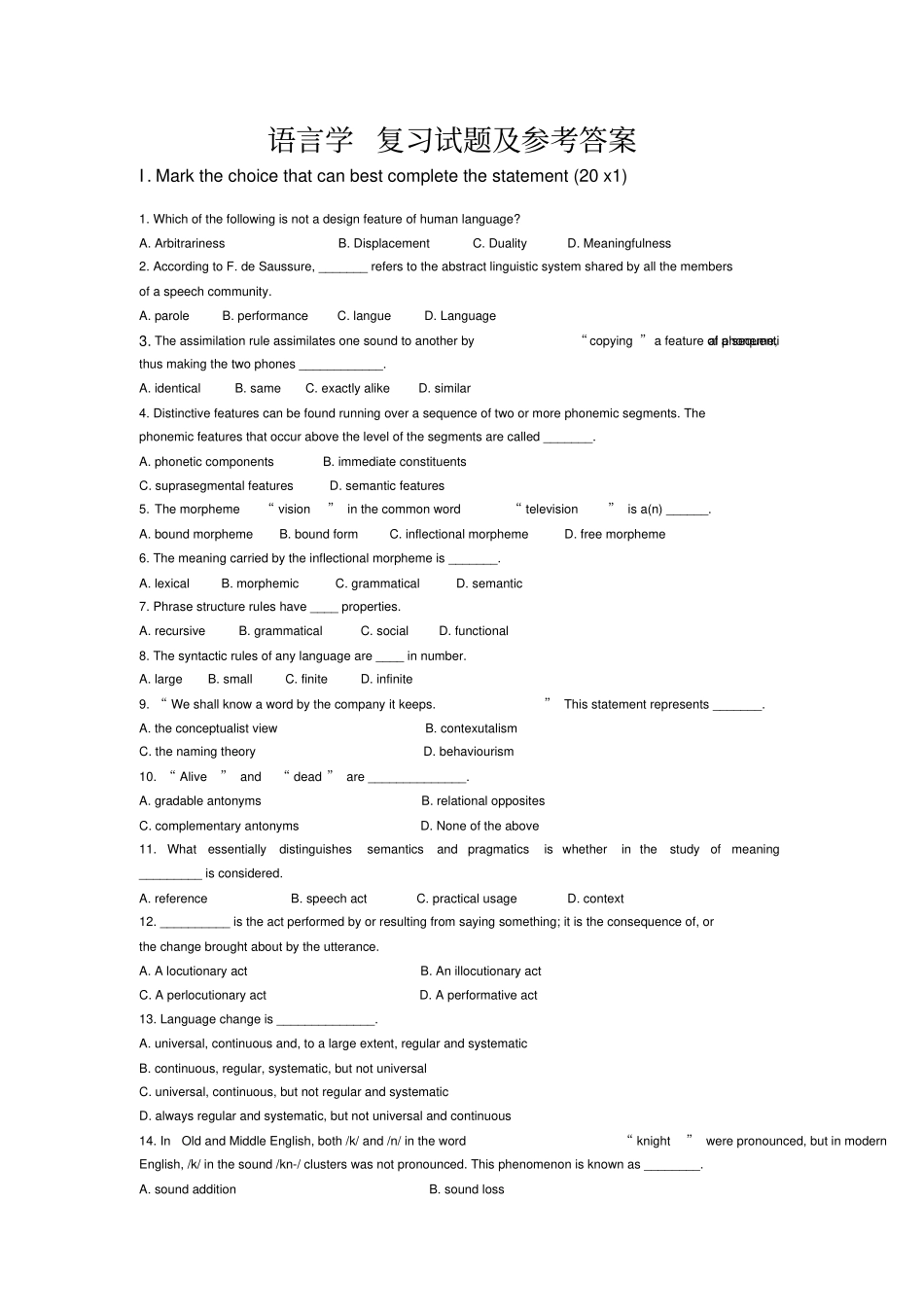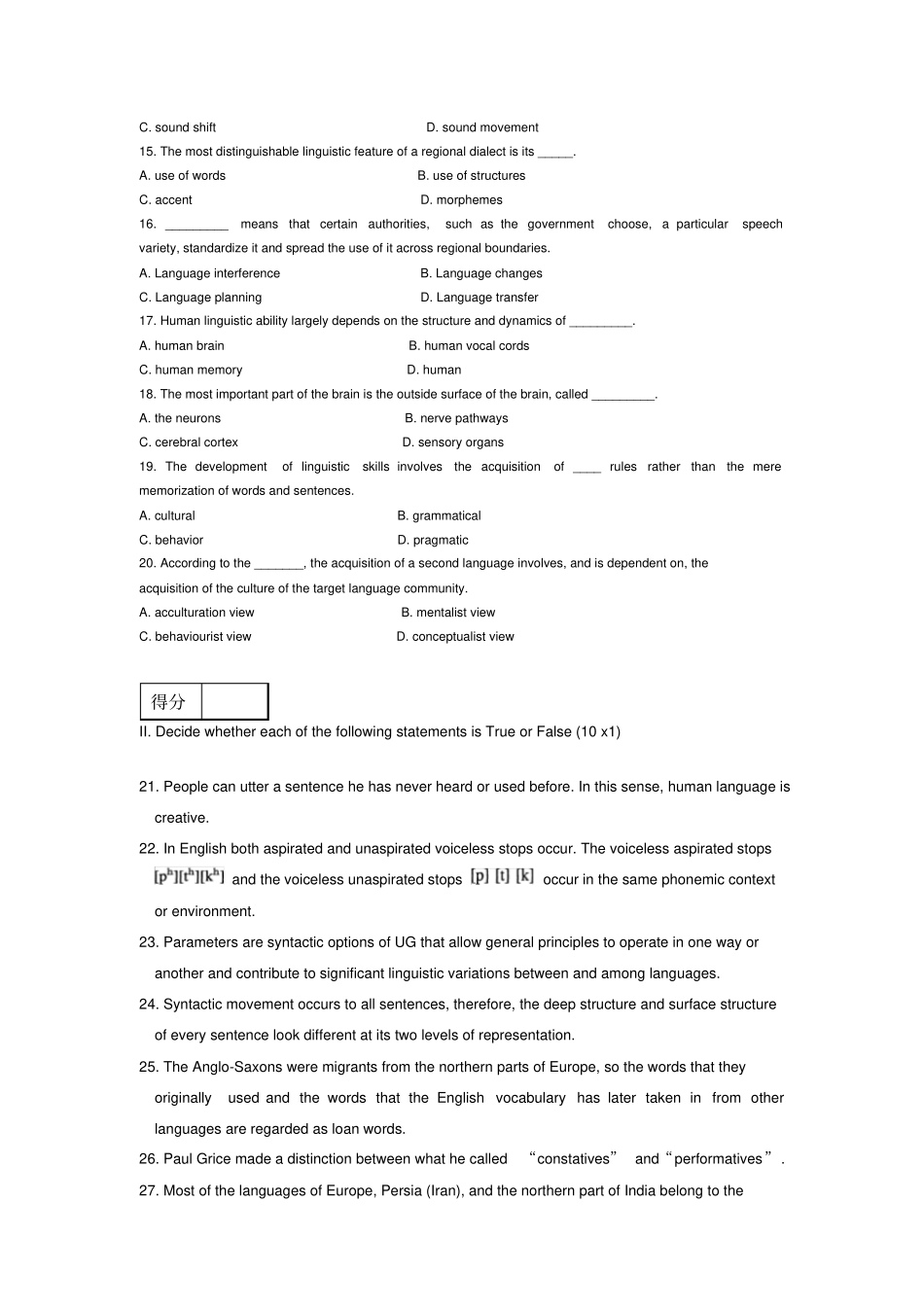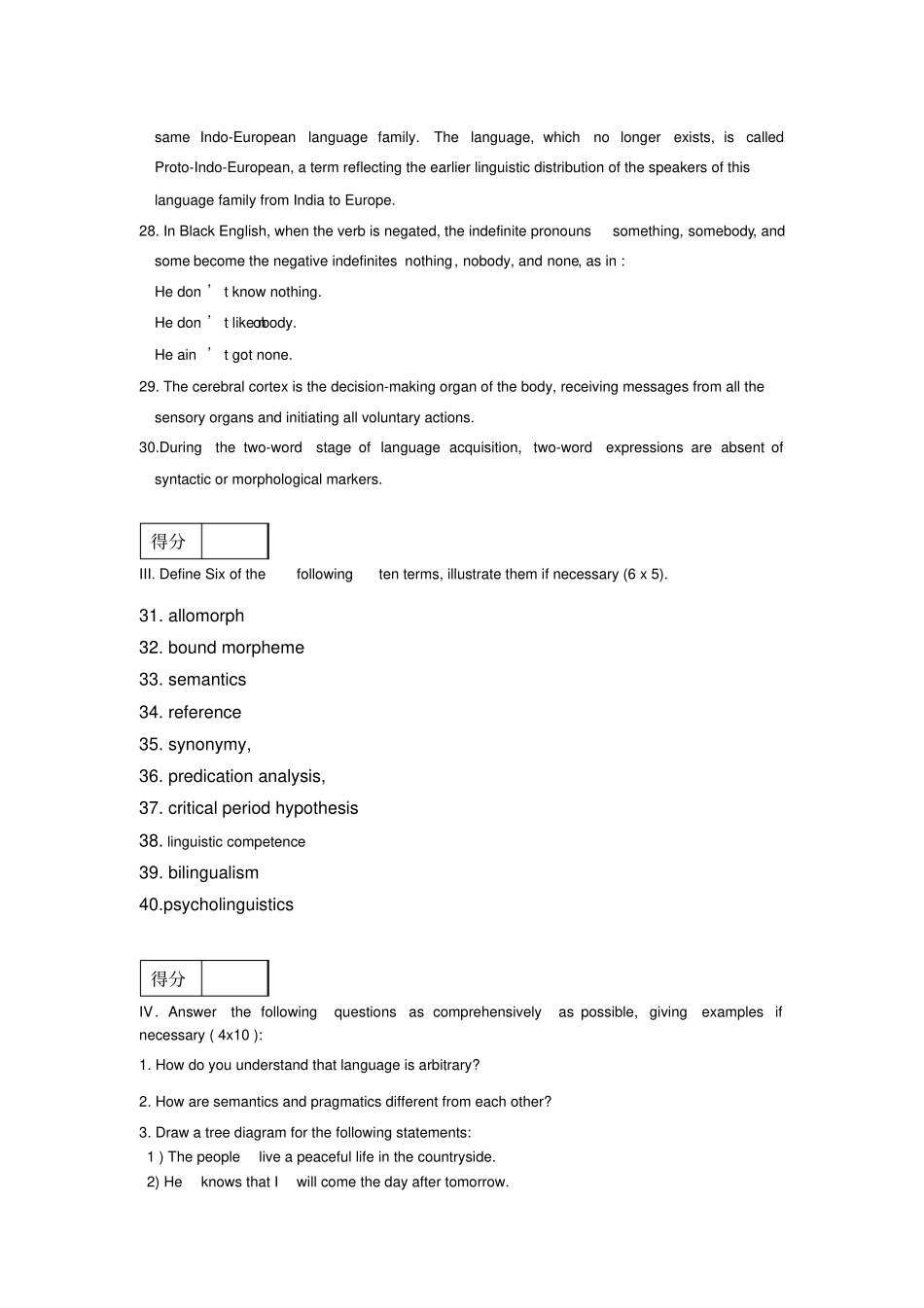语言学 复习试题及参考答案I . Mark the choice that can best complete the statement (20 x1) 1. Which of the following is not a design feature of human language? A. Arbitrariness B. Displacement C. Duality D. Meaningfulness 2. According to F. de Saussure, _______ refers to the abstract linguistic system shared by all the members of a speech community. A. parole B. performance C. langue D. Language3. The assimilation rule assimilates one sound to another by “ copying ” a feature of a sequential phoneme, thus making the two phones ____________. A. identical B. same C. exactly alike D. similar 4. Distinctive features can be found running over a sequence of two or more phonemic segments. The phonemic features that occur above the level of the segments are called _______. A. phonetic components B. immediate constituents C. suprasegmental features D. semantic features 5. The morpheme “ vision” in the common word “ television” is a(n) ______. A. bound morpheme B. bound form C. inflectional morpheme D. free morpheme 6. The meaning carried by the inflectional morpheme is _______. A. lexical B. morphemic C. grammatical D. semantic 7. Phrase structure rules have ____ properties. A. recursive B. grammatical C. social D. functional 8. The syntactic rules of any language are ____ in number. A. large B. small C. finite D. infinite 9. “ We shall know a word by the company it keeps.” This statement represents _______. A. the conceptualist view B. contexutalism C. the naming theory D. behaviourism 10. “ Alive” and “ dead ” are ______________. A. gradable antonyms B. relational opposites C. complementary antonyms D. None of the above 11. What essentially distinguishes semantics and pragmatics is wheth...


